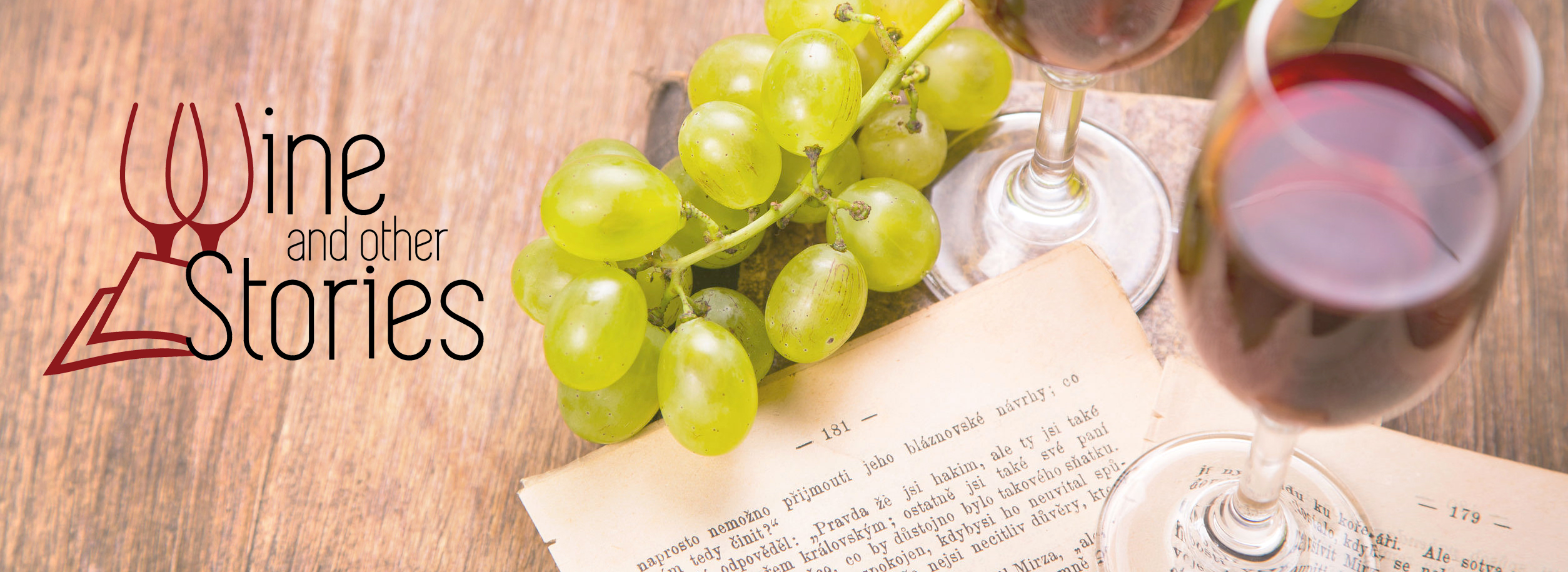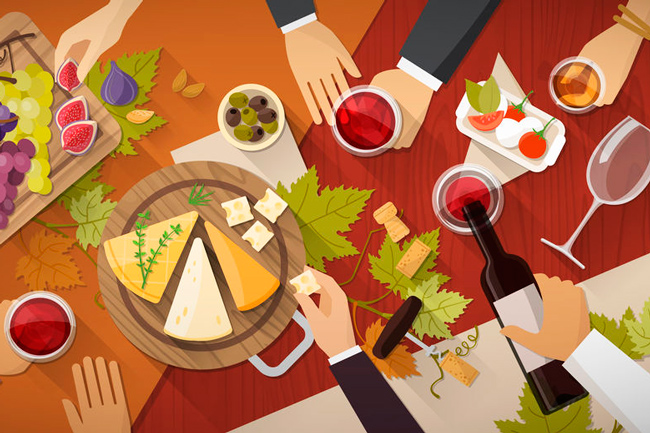Wine and food are two of the greatest pleasures in life. What happens when you combine them? Take your taste buds to the next level with the right food and wine pairing
Food and wine pairing reminds me of alchemy. Like this ancient discipline, the practice of matching food and wine is a mix of philosophy, science, belief and tradition. But it also encompasses a big chunk of baloney. It’s a huge and potentially overwhelming topic where subjectivity, personal experience, culture and different taste perceptions intertwine.
For a long time I was in two minds on whether to write something about this intricate subject here on Wine and Other Stories. Most Italians (and I am no exception), take both food and wine very seriously. There is a gargantuan amount of material on food and wine pairings available. Some of these resources awaken strong feelings in me. Unfortunately those feelings are not always positive…
Ultimately I resolved to write a three-part series dedicated to food and wine pairing. This is the first article. My goal is to share my perspective on this sensual matching and guide you – informed and passionate drinkers – to make sense of it all. I decided to call my series a semi-serious guide to food and wine pairing because I believe this topic is often taken a bit too seriously. Or maybe I mean too strictly… More on that matter in a bit.

My food and wine pairing series will be broken into the following parts:
- Part 1 (this article): An introduction to food and wine pairing, highlighting the benefits of working on this marriage. I’ll also outline some general principles to bear in mind when pairing food with wine
- Part 2 : I will lay out some general principles which will help your food and wine pairings. This article will be stuffed with examples to show these principles applied in practice
- Part 3 : I will outline the different approaches to wine pairing taken by wine experts and connoisseurs
Why do we pair wine and food?
Let’s start from the beginning. Why do we place so much importance on matching wine with food? The reason can be encapsulated in one word: Pleasure. The fundamental idea is that complementary food and wine generates more pleasure than these ingredients separately. When a pairing is nailed, the whole is greater than the sum of its parts.
The way wine writers, sommeliers or just winelovers approach this partnership between food and wine is multifold. We can broadly categorise food-wine matching attitudes into three schools of thought:
- Draconians – They believe pairings should follow strict rules and that combinations are somewhere between art and an exact science
- Skeptics – consider pairing as a false problem. Refusing any rule or guideline, this school of thought is based upon subjectivity
- Synthesis – merge the draconian and skeptic schools of thought
I am a fan of the synthesis school of thought as I believe: in medio stat virtus. In the realm of pleasure, subjectivity plays a central role. Yet the draconian approach ignores personal preferences and fantasy when they are pivotal ingredients of a good pairing.
However, food and wine do affect each other in an objective and scientific fashion. Therefore unlike skeptics, I do believe that it is useful to understand the elements that can affect the compatibility of food and wine. Guidelines (not rules!) can only increase the likelihood of pleasure and avoid undesirable outcomes.

Basic considerations on food and wine (and how they interact)
In my next article of the semi-serious guide to food and wine pairing I will illustrate a set of guidelines that, in my opinion, contribute to a successful marriage between wine and food. Before delving into those recommendations, I think it’s a good idea to set the scene by outlining some basic considerations.
Which comes first?
Generally food affects wine more than the other way round. Therefore, my advice on matching is to think in terms of that direction: food first, then wine.
For example, in restaurants (do you remember when we still used to go to those places of culinary worship?) I always focus on what I want to eat first. Once that decision is made, I then look for a wine to complement my food choice (either by scanning the wine list or asking for some advice – I think the latter is often funnier).
Order, order, order
Order is important. When we put something in our mouth (either food or wine), our taste buds immediately adapt to what we have just ingested. The perception of whatever we taste next is therefore altered. That’s why orange juice seems more acidic if you have just brushed your teeth with toothpaste.

In a meal, consider the order in which dishes are eaten. How that sequence takes place can influence the choice of wine (or wines) you wish to accompany the dish. For example, in a multi-course meal it’s a good idea to start with a simple wine to match a delicate starter or just as an aperitif. If the first wine is too strong/intense, it will impoverish what comes next. Over the course of the meal, you can progress onto stronger flavours and more intense wines.
The danger of oversimplification: in food
I tend to see ready-to-use tables or shiny infographics which determine with mathematical precision what wine can or should be paired with certain food. Beware the perils of oversimplification.
Do not solely consider the main ingredient of a dish. According to one of the aforementioned “pairing matrixes”, you should pair chicken with a light red. The Commandment has been passed. So mote it be! The suggested pairing makes no distinction between a lightly roasted chicken, an earthy chicken ragout with mushroom or a rich chargrilled chicken coated with thick barbecue sauce. That makes little sense to me.
Besides the components of a dish, for a sensible pairing you need to consider preparation (especially sauces and condiments). For example, in the chicken examples above, we might pair a red Burgundy with the roasted chicken. An oily white (e.g. viognier) with the chicken ragout and a fruity bold red (zinfandel) with the chargrilled barbecued chicken. As you can appreciate, each food and wine pair is very different!

… and in wine
Oversimplification can take place on the wine side as well. Pairing in terms of the grape variety alone can be misleading, especially with versatile cultivars. Climate, regional styles and even winemaking decisions have a determining role on the wine personality. All these aspects must be taken into account when it comes to food matching.
Chardonnay is a good example. A traditional Californian chardonnay is big and buttery, with soft low acidity and an oaky character. While Chablis (pure chardonnay from north Burgundy) is steely and fresh, with soaring acidity, green and citrusy flavours. Of course the two styles demand the pairing of very different dishes.

What’s next?
I hope this first part of my semi-serious guide to food and wine pairing sparked your curiosity on this subject. So far I have only laid the foundations. In my next article I will deal with some practical and no-nonsense guidelines (not rules!) to help you in the fascinating practice of matching wine with food. I assure you, the fortunate wedding of these two ingredients will unveil new frontiers of pleasures.
Stay tuned (and since you’re here subscribe to Wine and Other Stories – see below) for the next articles of my semi-serious guide to food and wine pairing. In the meantime, I think it’s a good idea for everyone to practice. That is, eating delicious food while drinking great wine. Who’s up for that type of training?


Comments · 2